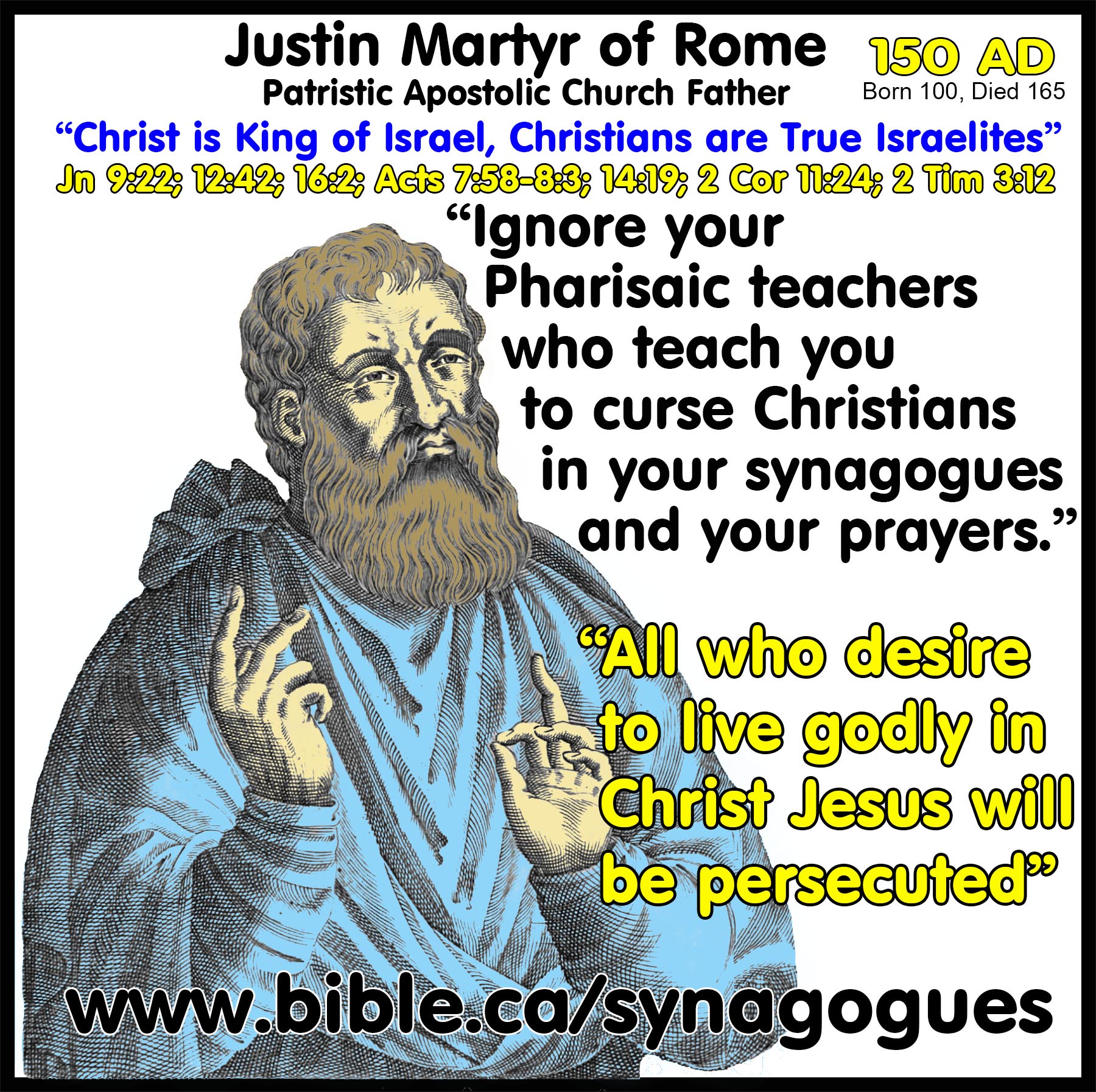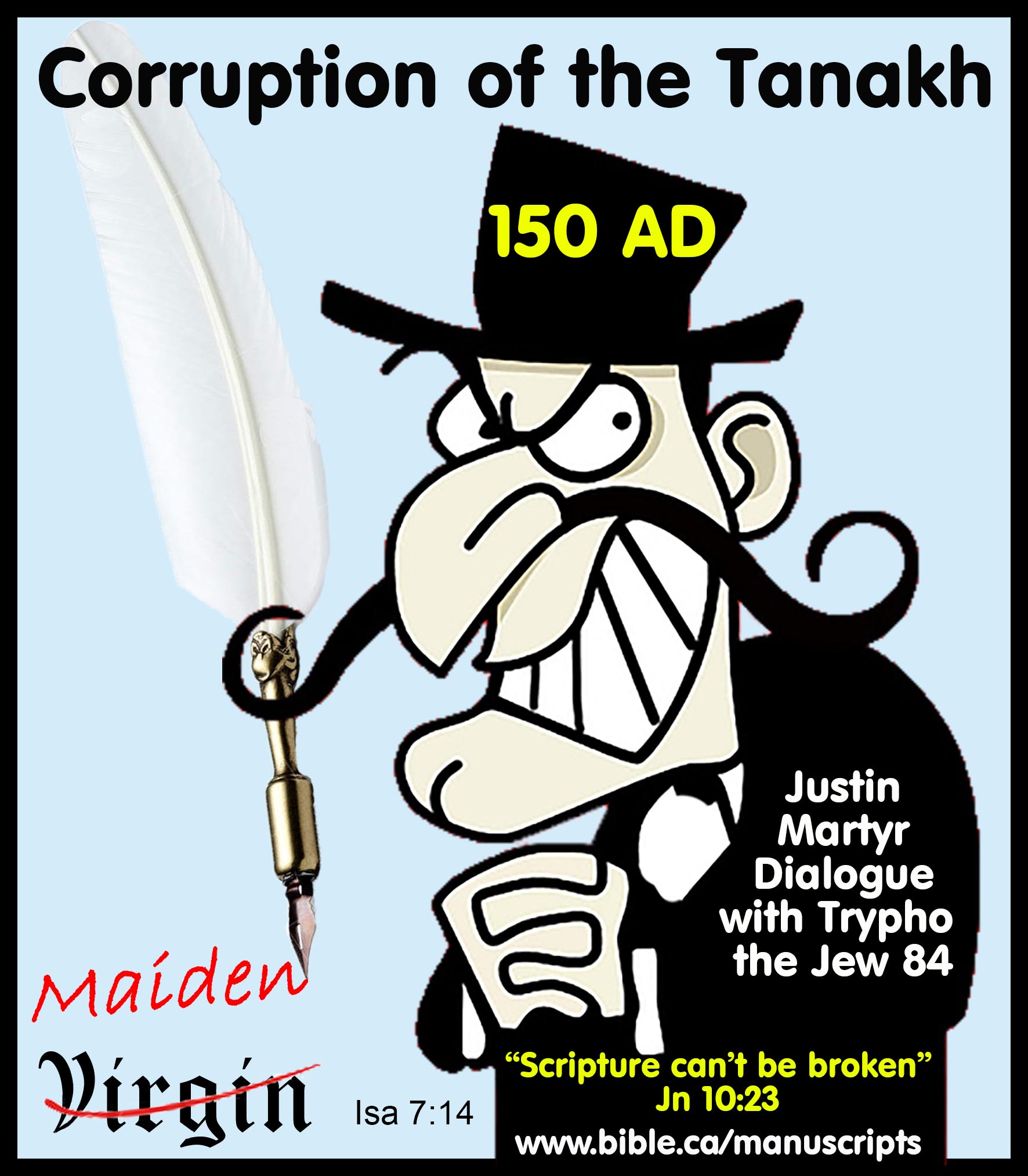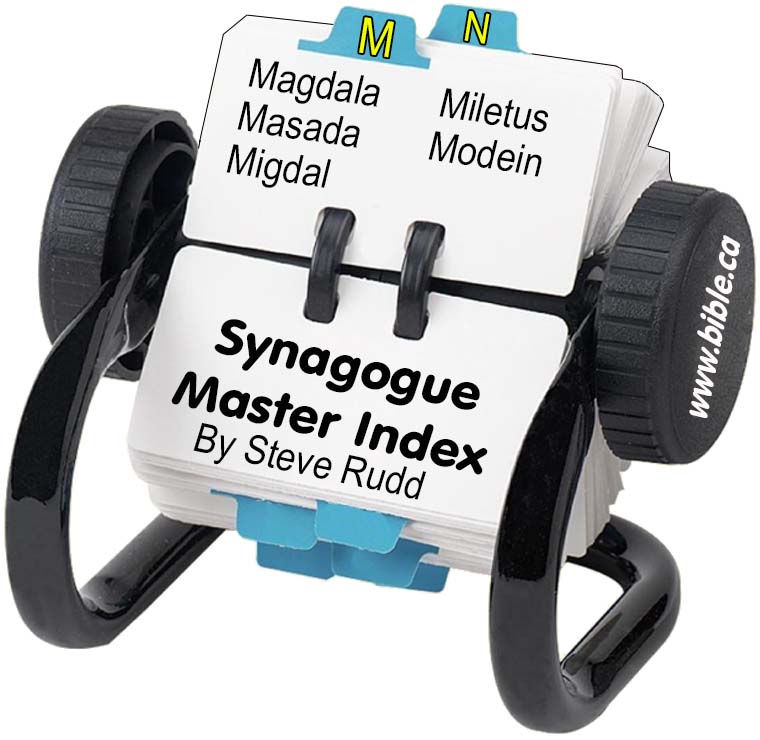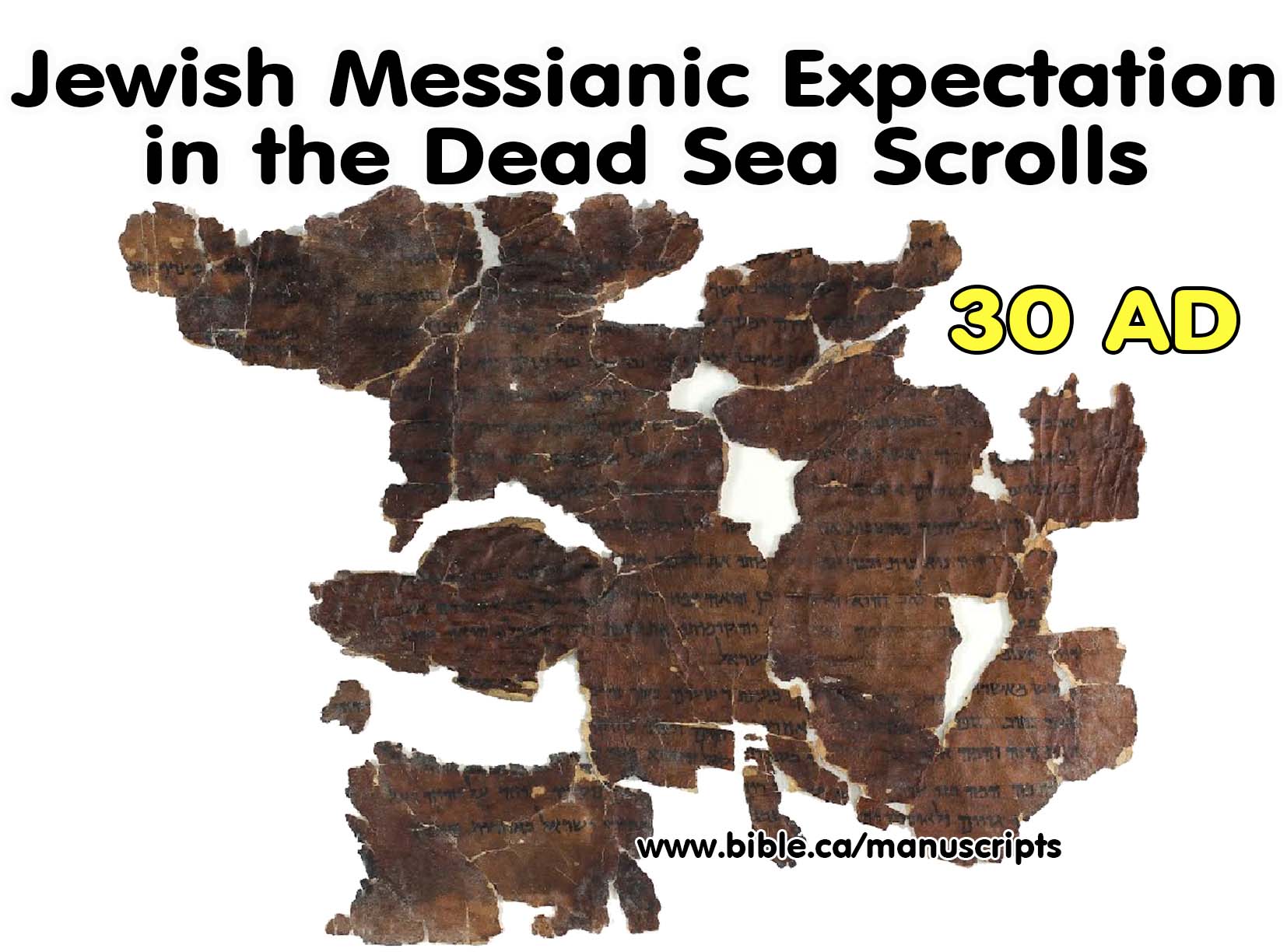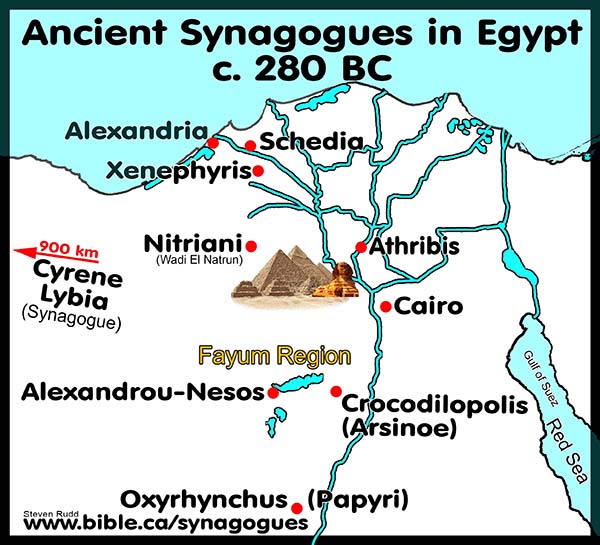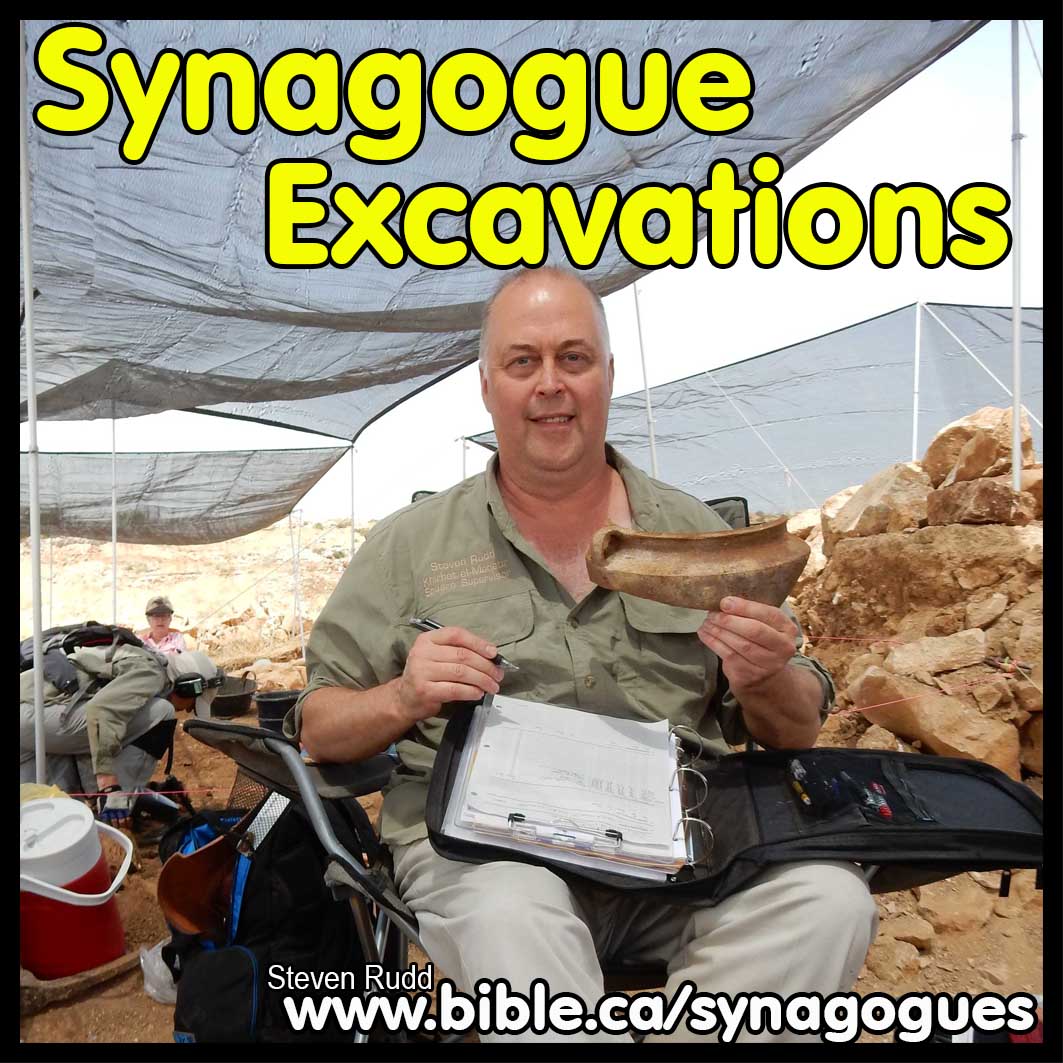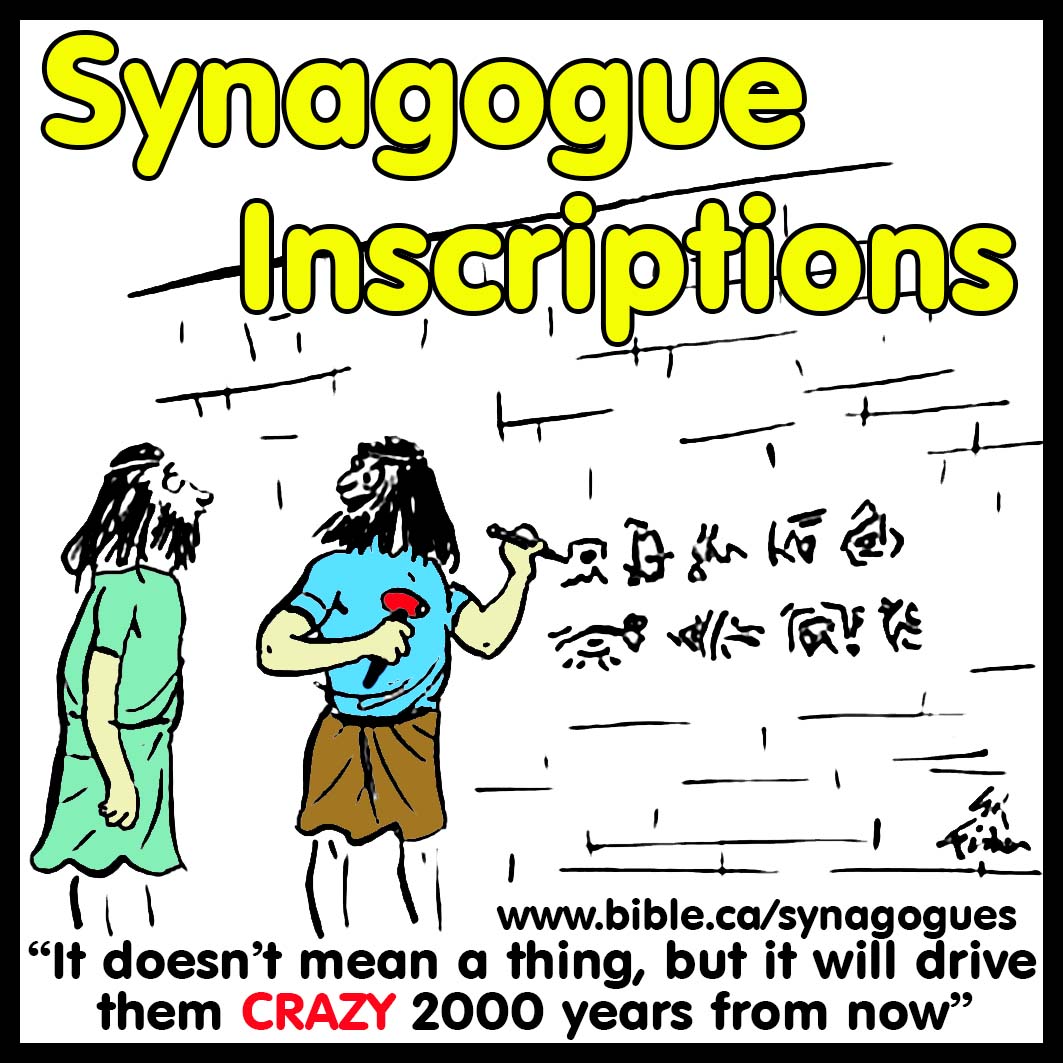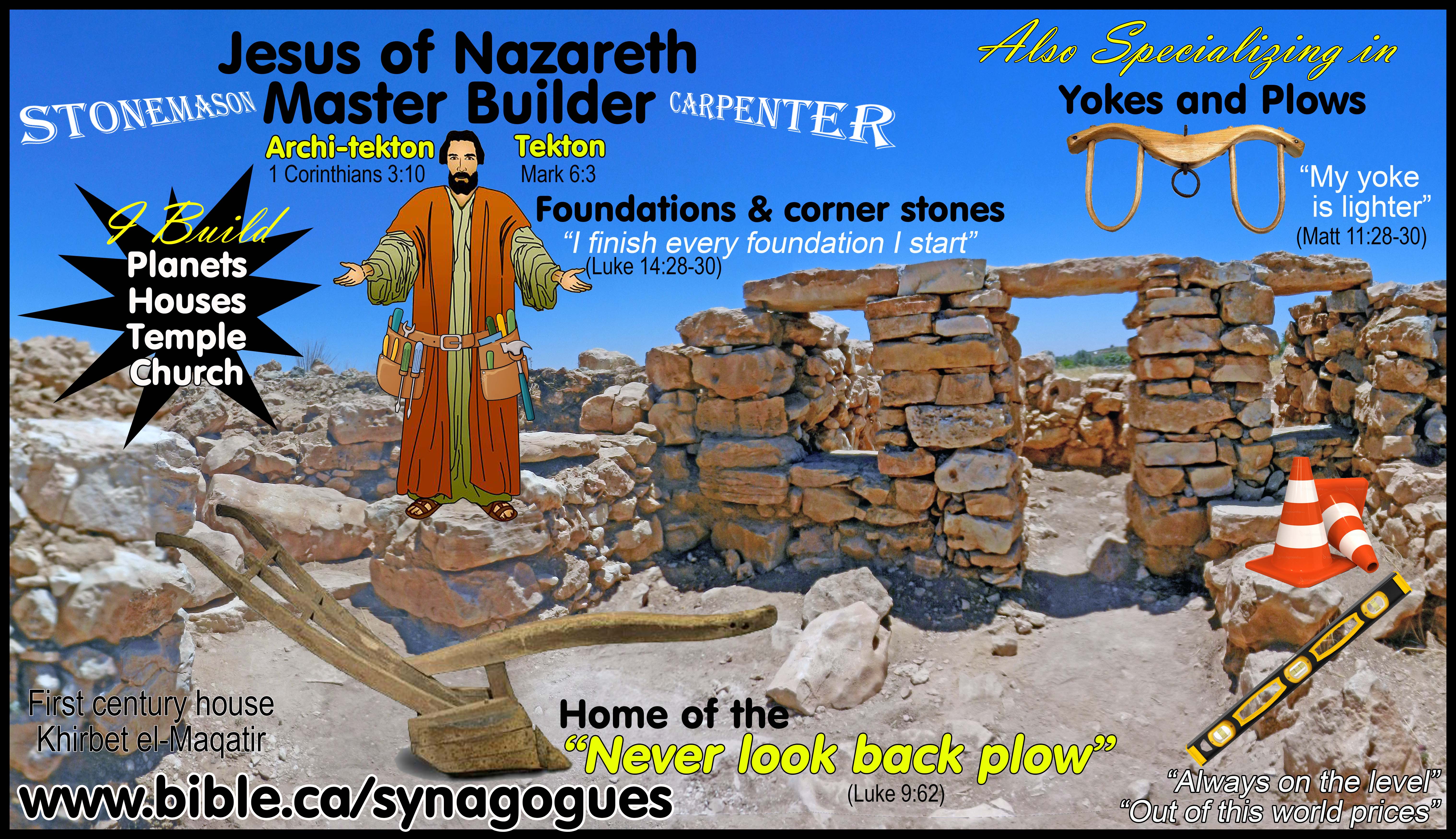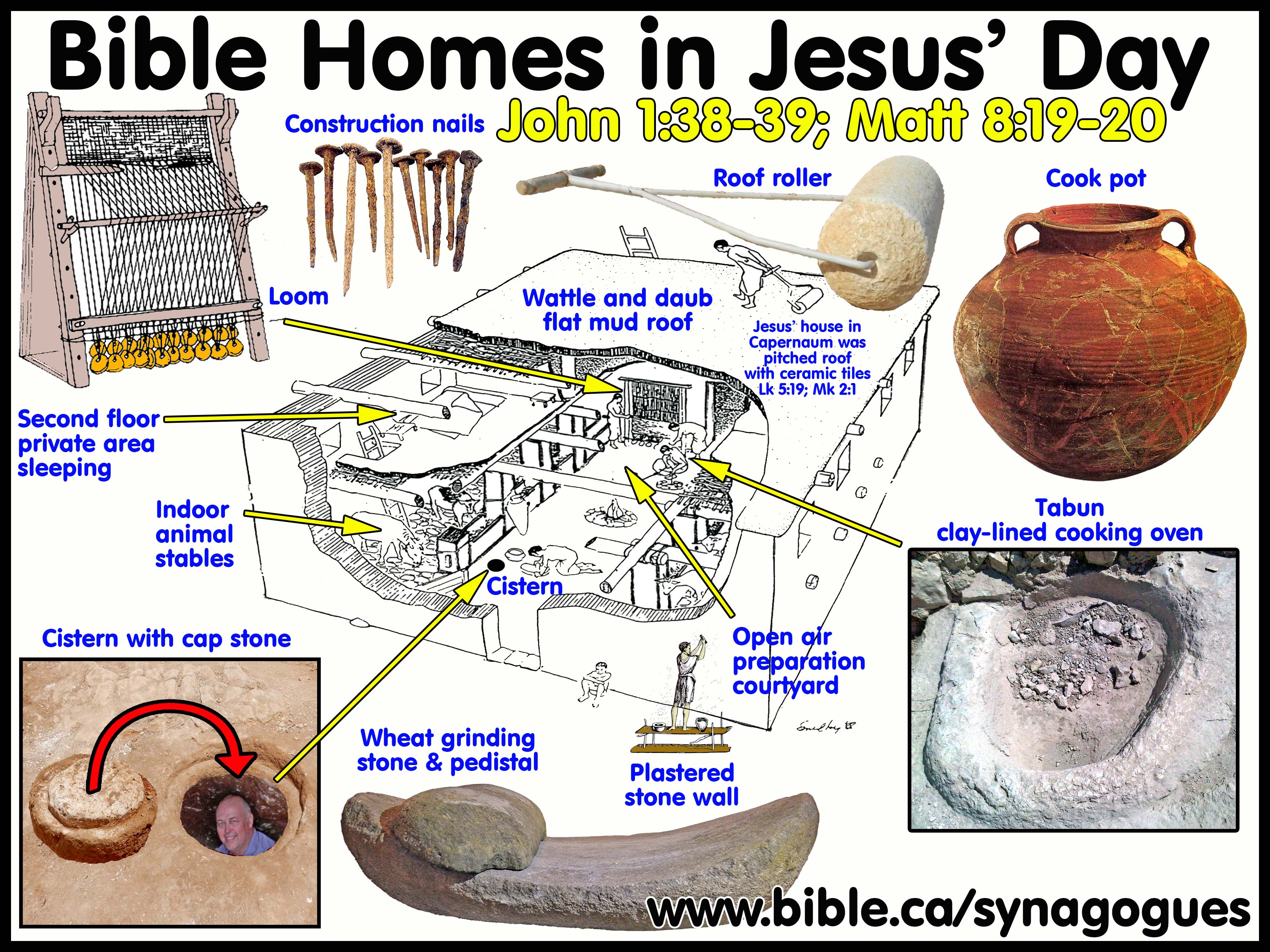Justin Martyr of Rome
150 AD
Ancient Synagogue Literary Sources
Jews Persecuting Christians
Jewish corruption of the Greek Old Testament (Septuagint, LXX)
Patristic Apostolic Church Father
Justin Martyr said:
· “Jews dishonor and curse Christians in your synagogues”
· “All the house of Israel are uncircumcised in their hearts”
· "Christ is King of Israel, and Christians are the Israelite Race.”
· “We hewn out of the side of Christ, are the true people of Israel”
· “We from Christ, who begat us unto God, are called and are the true sons of God”
· “Jews in their synagogues have cursed and still do curse those who believe”
· “In your synagogues you curse Christians, and use Gentiles [as agents] to put into effect your curse, by killing Christians.”
· “Ignore your Pharisaic teachers, do not scorn the King of Israel, as your synagogue officials instruct you do in your prayers”
· “Ignore your Pharisaic teachers who teach you to curse Christians in your synagogues and your prayers.”
· “To our persecutors we say: “You are our brothers and we pray for you that you might experience the mercy of Christ”
|
See also: Jewish corruption of the Greek Old Testament (Septuagint, LXX)
|
|
|
Justin Martyr documents how Jews in 150 AD were changing the Greek text of the Septuagint in their synagogues.
|
|
|
|
|
Introduction:
1. Justin said that Pharisees spouted hate speech against Christians in their Synagogues.
2. “for unless you believe that I am He, you will die in your sins”
a. Muslims deny Jesus died on the cross, Jews deny Jesus rose from the dead and atheists deny Jesus ever lived but they are all in the same spiritual ship destined for eternal destruction until they believe that Jesus is the risen messiah.
b. "“Therefore I said to you that you will die in your sins; for unless you believe that I am He, you will die in your sins.” So they were saying to Him, “Who are You?” Jesus said to them, “What have I been saying to you from the beginning? “I have many things to speak and to judge concerning you, but He who sent Me is true; and the things which I heard from Him, these I speak to the world.” They did not realize that He had been speaking to them about the Father. So Jesus said, “When you lift up the Son of Man, then you will know that I am He, and I do nothing on My own initiative, but I speak these things as the Father taught Me. “And He who sent Me is with Me; He has not left Me alone, for I always do the things that are pleasing to Him.” As He spoke these things, many came to believe in Him." (John 8:24–30)
c. Just as Muslims today openly preach hatred and destruction of Jews in their mosques, so too the ancient Jews openly preached the identical hatred and destruction to Christians in the first century AD.
3. There is a long history of Jews persecuting and hating Christians starting with the day Jesus began his ministry around 30 AD.
4. It was the Jews who expelled the Christians from the synagogues not the other way around.
I. Jewish Persecution of Christians in 160 AD
A. During the ministry of Jesus, the Jews expelled anyone who believed he was the Messiah:
1. "His parents said this because they were afraid of the Jews; for the Jews had already agreed that if anyone confessed Him to be Christ, he was to be put out of the synagogue." (John 9:22)
2. "Nevertheless many even of the rulers believed in Him, but because of the Pharisees they were not confessing Him, for fear that they would be put out of the synagogue;" (John 12:42)
3. “Blessed are you when men hate you, and ostracize you, and insult you, and scorn your name as evil, for the sake of the Son of Man." (Luke 6:22)
4. “They will make you outcasts from the synagogue, but an hour is coming for everyone who kills you to think that he is offering service to God." (John 16:2)
B. From the church’s very beginning on Pentecost 33 AD, Christians were beaten, jailed and persecuted by Jews:
1. 33 AD: Jailed and threatened: One day after Pentecost after healing the lame man: "As they were speaking to the people, the priests and the captain of the temple guard and the Sadducees came up to them, being greatly disturbed because they were teaching the people and proclaiming in Jesus the resurrection from the dead. And they laid hands on them and put them in jail until the next day, for it was already evening. … "And when they had summoned them, they commanded them not to speak or teach at all in the name of Jesus. But Peter and John answered and said to them, “Whether it is right in the sight of God to give heed to you rather than to God, you be the judge; for we cannot stop speaking about what we have seen and heard.” When they had threatened them further, they let them go (finding no basis on which to punish them) on account of the people, because they were all glorifying God for what had happened; for the man was more than forty years old on whom this miracle of healing had been performed." (Acts 4:1-3; 18–22)
2. 33 AD: Jailed, threatened, beaten: Two Days after Pentecost after healing the lame man "But the high priest rose up, along with all his associates (that is the sect of the Sadducees), and they were filled with jealousy. They laid hands on the apostles and put them in a public jail. But during the night an angel of the Lord opened the gates of the prison, and taking them out he said, “Go, stand and speak to the people in the temple the whole message of this Life.” Upon hearing this, they entered into the temple about daybreak and began to teach. Now when the high priest and his associates came, they called the Council together, even all the Senate of the sons of Israel, and sent orders to the prison house for them to be brought. But the officers who came did not find them in the prison; and they returned and reported back, saying, “We found the prison house locked quite securely and the guards standing at the doors; but when we had opened up, we found no one inside.” Now when the captain of the temple guard and the chief priests heard these words, they were greatly perplexed about them as to what would come of this. But someone came and reported to them, “The men whom you put in prison are standing in the temple and teaching the people!” Then the captain went along with the officers and proceeded to bring them back without violence (for they were afraid of the people, that they might be stoned). When they had brought them, they stood them before the Council. The high priest questioned them, saying, “We gave you strict orders not to continue teaching in this name, and yet, you have filled Jerusalem with your teaching and intend to bring this man’s blood upon us.” But Peter and the apostles answered, “We must obey God rather than men. “The God of our fathers raised up Jesus, whom you had put to death by hanging Him on a cross. “He is the one whom God exalted to His right hand as a Prince and a Savior, to grant repentance to Israel, and forgiveness of sins. “And we are witnesses of these things; and so is the Holy Spirit, whom God has given to those who obey Him.” But when they heard this, they were cut to the quick and intended to kill them. But a Pharisee named Gamaliel, a teacher of the Law, respected by all the people, stood up in the Council and gave orders to put the men outside for a short time. And he said to them, “Men of Israel, take care what you propose to do with these men. “For some time ago Theudas rose up, claiming to be somebody, and a group of about four hundred men joined up with him. But he was killed, and all who followed him were dispersed and came to nothing. “After this man, Judas of Galilee rose up in the days of the census and drew away some people after him; he too perished, and all those who followed him were scattered. “So in the present case, I say to you, stay away from these men and let them alone, for if this plan or action is of men, it will be overthrown; but if it is of God, you will not be able to overthrow them; or else you may even be found fighting against God.” They took his advice; and after calling the apostles in, they flogged them and ordered them not to speak in the name of Jesus, and then released them. So they went on their way from the presence of the Council, rejoicing that they had been considered worthy to suffer shame for His name. And every day, in the temple and from house to house, they kept right on teaching and preaching Jesus as the Christ." (Acts 5:17–42)
C. Even Apostle Paul killed and persecuted Christians in 36 AD:
1. “Paul who once persecuted us, is now preaching the faith which he once tried to destroy.”" (Galatians 1:23)
2. "When they had driven him out of the city, they began stoning him [Stephen]; and the witnesses laid aside their robes at the feet of a young man named Saul [Paul]. … Saul was in hearty agreement with putting him to death. And on that day a great persecution began against the church in Jerusalem, and they were all scattered throughout the regions of Judea and Samaria, except the apostles. Some devout men buried Stephen, and made loud lamentation over him. But Saul [Paul] began ravaging the church, entering house after house, and dragging off men and women, he would put them in prison." " (Acts 7:58-8:3)
3. "Indeed, all who desire to live godly in Christ Jesus will be persecuted." (2 Timothy 3:12)
D. After conversion, Apostle Paul was beaten and stoned by the Jews in 40 AD:
1. "Are they [Jews] Hebrews? So am I. Are they Israelites? So am I. Are they descendants of Abraham? So am I. … in far more labors, in far more imprisonments, beaten times without number, often in danger of death. Five times I received from the Jews thirty-nine lashes. Three times I was beaten with rods, once I was stoned" (2 Corinthians 11:22–25)
2. "But Jews came from Antioch and Iconium, and having won over the crowds, they stoned Paul and dragged him out of the city, supposing him to be dead. But while the disciples stood around him, he got up and entered the city. The next day he went away with Barnabas to Derbe." (Acts 14:19–20)
a. Jesus may have resurrected his dead body during on of these persecution incidents, this may be where Paul was caught up to heaven.
b. "I know a man in Christ who fourteen years ago [42 AD]—whether in the body I do not know, or out of the body I do not know, God knows—such a man was caught up to the third heaven. And I know how such a man—whether in the body or apart from the body I do not know, God knows— was caught up into Paradise and heard inexpressible words, which a man is not permitted to speak." (2 Corinthians 12:2–4)
c. “If, as seems probable, the present letter (chaps. 10–13) was written in the summer of 56 c.e., then the experience referred to here would have occurred sometime around the year 42. By most reckonings this would have been almost a decade before Paul’s first visit to Corinth, but also substantially after his call to apostleship.” (AYBC, 1 Corinthians 12:2)
E. Justin Martyr describes how Pharisees preached hatred of Christians in their Synagogues in 150 AD:
1. Just as Muslims today openly preach hatred and destruction of Jews in their mosques, so too the ancient Jews openly preached the identical hatred and destruction to Christians in the first century AD.
2. “Now you [Jews] spurn those who hope in Him [Jesus], and in Him who sent Him, namely, Almighty God, the Creator of all things; to the utmost of your power you dishonor and curse [Christians] in your synagogues all those who believe in Christ. Now, indeed, you cannot use violence against us Christians, because of those who are in power, but as often as you [Jews] could, you did employ force against us.” (Justin Martyr, Dialogue 16)
3. “The same can be said of those descendants of Abraham [Jews], who follow the Law and refuse to believe in Christ to their very last breath. Especially excluded from eternal salvation are they [Jews] who in their synagogues have cursed and still do curse those who believe [Christians] in that very Christ in order that they may attain salvation and escape the avenging fires of Hell.” (Justin Martyr, Dialogue 47)
4. “For, in your synagogues you [Jews] curse all those who through Him have become Christians, and the Gentiles put into effect your curse by killing all those who merely admit that they are Christians. To all our persecutors we say: “You are our brothers; apprehend, rather, the truth of God.” But when neither they nor you will listen to us, but you do all in your power to force us to deny Christ, we resist you and prefer to endure death, confident that God will give us all the blessings which He promised us through Christ. Furthermore, we pray for you that you might experience the mercy of Christ; for He in-strutted us to pray even for our enemies, when He said: “Be kind and merciful, even as your Heavenly Father is merciful.” We can observe that Almighty God is kind and merciful, causing His sun to shine on the ungrateful and on the just, and sending rain to both the holy and the evil; but all of them, He has told us, He will judge.’” (Justin Martyr, Dialogue 96, 1948 AD translation)
5. “For the statement in the law, ‘Cursed is every one that hangeth on a tree,’ confirms our hope which depends on the crucified Christ, not because He who has been crucified is cursed by God, but because God foretold that which would be done by you all, and by those like to you, who do not know4 that this is He who existed before all, who is the eternal Priest of God, and King, and Christ. And you clearly see that this has come to pass. For you curse in your synagogues all those who are called from Him Christians; and other nations effectively carry out the curse, putting to death those who simply confess themselves to be Christians; to all of whom we say, You are our brethren; rather recognise the truth of God. And while neither they nor you are persuaded by us, but strive earnestly to cause us to deny the name of Christ, we choose rather and submit to death, in the full assurance that all the good which God has promised through Christ He will reward us with. And in addition to all this we pray for you, that Christ may have mercy upon you. For He taught us to pray for our enemies also, saying, ‘Love your enemies; be kind and merciful, as your heavenly Father is.’6 For we see that the Almighty God is kind and merciful, causing His sun to rise on the unthankful and on the righteous, and sending rain on the holy and on the wicked; all of whom He has taught us He will judge. ” (Justin Martyr, Dialogue 96, 1885 AD translation)
6. “For it would be wonderful if you [Jews] would obey the Scriptures and be circumcised from the hardness of your [Jewish] heart, not with the circumcision which you have according to your deep-rooted idea, for the Scriptures convince us that such a circumcision was given as a sign and not as a work of righteousness. Agree with us, therefore, and do not insult the Son of God; ignoring your Pharisaic teachers, do not scorn the King of Israel as the chiefs of your synagogues instruct you [Jews] to do in your prayers. For, if he who touches those who are not pleasing to God is as he who touches the apple of God’s eye, how much more so is he who touches His Beloved. And it has been sufficiently proved that this is He.’” (Justin Martyr, Dialogue 137)
F. Jews help kill 90,000 Christians in Jerusalem in 614 AD: Theophanes Confessor
1. In 813 AD, Theophanes the Confessor recorded this entry for the year 614 AD:
a. Theophanes the Confessor was an historical who wrote a yearly chronicle and diary of world events in the Byzantine empire including both the Persian (614 AD) and various Islamic conquests of Jerusalem from 284-813 AD.
b. “In this year the Persians took [the region of] the Jordan, Palestine, and the Holy City [Jerusalem] by force of arms and killed many people [Christians] therein through the agency of the Jews: some say it was 90,000. For the Jews bought the Christians, each man according to his means, and killed them. As for Zacharias, patriarch of Jerusalem, and the holy and life-giving Cross, the Persians took them along with many captives and carried them off to Persia.” (The Chronicle of Theophanes Confessor, Byzantine history 284-813 AD, Cyril Mango, Roger Scott, Michael Maas, p431, 1997 AD)
2. 90,000 or 66,509 or 57,000 Christians executed in Jerusalem:
a. The Chronicle of Theophanes Confessor says 90,000 killed. (see above)
b. The Chronicle of Antiochus Strategios says 66,509 Killed: La prise de Jérusalem par les perses en 614, Gérard Garitte, 1960 AD, Antiochus Strategios, Chronicles of a 7th century Monk of Palestine, p13-14, records that Jerusalem fell in early May 614 and on pages 50-3 gives a tabulation of the dead toll at 66,509 killed in 614 AD in Jerusalem.
c. The Chronicle of Anastasius of Persia says 57,000 Killed: Anastase saint le Persia 575 – 630 AD, B. Flusin, 1992 AD, , ii. 16o. Sebeos, 69 gives a tabulation of 57,000 dead.
d. It is obvious that these ancient history sources document a massive slaughter of Christians by the Persians and the Jews in Jerusalem in 614 AD.
3. Who is Theophanes the Confessor:
a. Theophanes the Confessor was an historical who wrote a yearly chronicle and diary of world events in the Byzantine empire including both the Persian (614 AD) and various Islamic conquests of Jerusalem from 284-813 AD.
b. “THEOPHANES THE CONFESSOR, SAINT, (born c. 752—died c. 818, island of Samothrace, Greece; feast day March 12) Byzantine monk, theologian, and chronicler, a principal adversary of the heterodox in the Iconoclastic Controversy (concerning the destruction of sacred images). The annals he wrote are the leading source for 7th- and 8th-century Byzantine history. Of a noble family related to the Macedonian dynasty, Theophanes became a monk shortly after marrying a patrician woman; he founded a monastery near Cyzicus. Advocating the early Christian tradition of using religious art to ornament worship, Theophanes, at the second general Council of Nicaea (787), argued for its continued practice in the Eastern Church. He ridiculed Iconoclastic Byzantine emperors. After being imprisoned in Constantinople (814–815) by Emperor Leo V, he was banished to the island of Samothrace, where he died. The Greek and Latin churches revere him as a saintly defender of orthodox faith; hence the title Confessor. Between the years 810 and 814 Theophanes, at the invitation of a friend, the noted historian George Syncellus, wrote his chief work, the Chronographia (“Chronography”), a series of annals on Byzantine, Arabic, and Latin history, which is particularly valuable because it used older sources now lost and is the only comprehensive chronicle of 7th- and 8th-century Byzantium. According to modern historians, Theophanes lacked depth of scholarship, historical insight, and objectivity. His Chronographia, however, presents the sole detailed account of the Byzantine victory over the Arab besiegers of Constantinople (674–678) and describes the famous “Greek fire,” an explosive mixture that could be hurled great distances and enabled the Byzantines to destroy the Arab fleet. Theophanes also graphically recorded the disastrous defeat of Emperor Nicephorus I by the Bulgarians near Pliska, July 26, 811, in which the emperor was slain, the first Byzantine ruler to be killed by barbarians since Emperor Valens at the Battle of Adrianople in 378. (Encyclopedia Britannica, Theophanes the Confessor, Saint, 2016 AD)
c. “Theophanes the Confessor: Byzantine chronographer; b. c. 758; d. in Samothrace c. 817. On the eve of his marriage he bound himself and his bride to continence, then became a monk, and soon after founded the monastery “of the great field” near Sigriane on the Sea of Marmora. He advocated image worship at the Second Council of Nicæa in 787, and as a partisan of image worship was imprisoned in Constantinople under Leo the Armenian in 814–815 and then was banished to Samothrace. He wrote his chronography between 810–811 and 814–815 at the request of Georgius Syncellus (d. 810), continuing the latter’s chronicle. It comprises the years 284–813 and incorporates material from Socrates, Sozomen, and Theodoret as found in an epitome by Theodorus Lector; also a Constantinopolitan chronicle. Theophanes’ work has the faults of an ascetic turned historian and writing in haste, yet it is better than most of the Byzantine chronicles. A Latin translation by Anastasius Bibliothecarius made between 873 and 878 was much used in the West during the Middle Ages.” (THEOPHANES OF BYZANTIUM, Schaff-Herzog Encyclopedia of Religious Knowledge, Volume I–XII Volume 11, Page 403, 1914 AD)
4. Recent professional three dimensional archeological Excavations confirm many mass graves in Jerusalem that date to 614 AD:
a. The Chronicle of Antiochus Strategios says 66,509 Killed. The Chronicle of Anastasius of Persia says 57,000 Killed:
b. Two of the Chronicles listed (Antiochus Strategios and Anastasius of Persia) have tabulated a list of 35 specific mass grave sites in Jerusalem including the number of Christians in each mass grave location.
a. h. “Additional support for the association of the mass burials with the Persian conquest comes from the connection of the burial sites to places mentioned by Strategius as the burial sites of the massacre victims. Thirty-five locations are mentioned in his list, and some of them can be identified with places around the city (Milik 1960-1961: 133). The largest number of deceased was found in the Mamilla pool, west of Jaffa Gate. The various manuscripts provide two different numbers, either 4,518 (4,618 according to another version) or 24,518 people who were massa-cred here and buried by Thomas "the Grave Digger".” (The Persian Conquest of Jerusalem, 614 c.e.- An Archaeological Assessment, Gideon Avni, BASOR, No. 357, p35-48, 2010 AD)
b. Archeologically Excavated mass grave sites correspond with ancient locations listed in Historical Chronicles.
5.
Here is a map of the location of the mass grave sites
in Jerusalem form the 614 Holocaust of Christians:
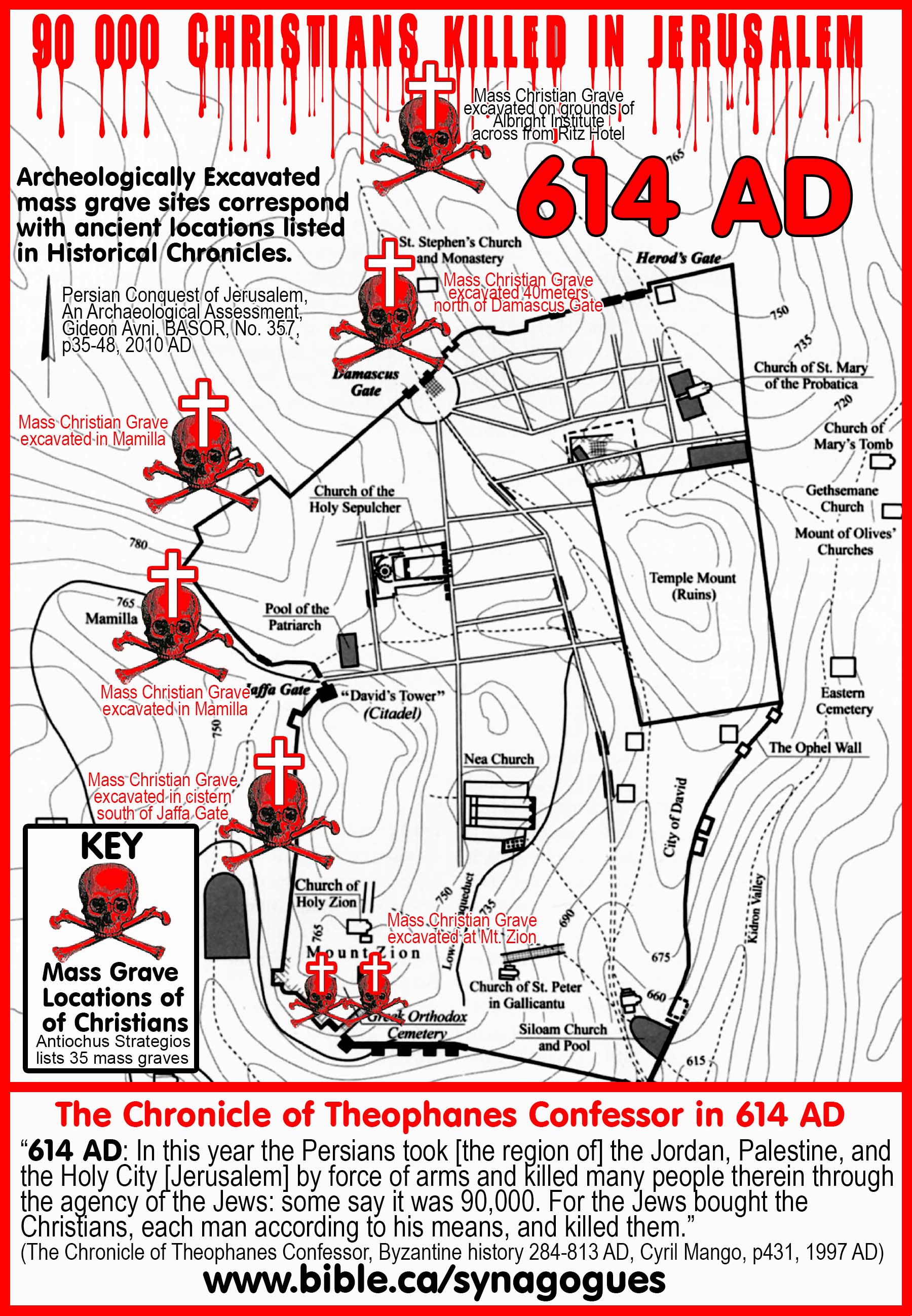
6. Archeological excavation details about the 614 murder of 90,000 Christians:
a. “The Persian conquest of Palestine in 614 C.E. is described in historical sources as a violent military raid that dramatically affected the political and administrative stability of Byzantine Palestine, involving large-scale damage to churches and a mass killing of the local Christian population. … The large number of excavated sites in and around Jerusalem in which remains from the Byzantine period were found, together with the detailed historical descriptions on the conquest and massacre of the Christian population, provide an unparalleled opportunity to compare the historical narrative with the archaeological findings.” (The Persian Conquest of Jerusalem, 614 c.e.- An Archaeological Assessment, Gideon Avni, BASOR, No. 357, p35-48, 2010 AD)
b. “A detailed analysis of Byzantine burial sites around Jerusalem reveals several large concentrations of human bones. These are not the ordinary type of urban burials, characteristic of the Byzantine period, which included either single shaft tombs or family burial caves (e.g., Avni and Greenhut 1996; Avni 2005; Avni, Dahari, and Kloner 2008), but rather intentional gatherings of numerous corpses into a cave, water cistern, or an existing family burial cave. A careful investigation of this type of sepulcher reveals seven such sites, all located outside the walls of the Old City and clearly associated with the Byzantine period. Most of these were accidentally discovered during construction works and were only briefly mentioned in short notes or preliminary reports. .” (The Persian Conquest of Jerusalem, 614 c.e.- An Archaeological Assessment, Gideon Avni, BASOR, No. 357, p35-48, 2010 AD)
c. “The most explicit mass burial site is a rock-cut cave located in Mamilla, about 120 m west of Jaffa Gate. This area is part of the western urban burial ground of Jerusalem, which was in use from the eighth/seventh centuries B.C.E. to the Byzantine period (Reich 1994; Maeir 1994). Among the common types of tombs and burial caves was a cave exceptional in its shape and contents (Reich 1996). This elongated cave, ca. 12 m long and 3 m wide, was filled with heaps of human bones. A small chapel (ca. 6 x 3 m) was constructed in front of the cave, with an apse facing east. The chapel walls were coated with painted plaster, and the apse bore traces of a fresco depicting an angel extending his hands. The floor was paved with a mosaic decorated with three crosses. A four-line inscription within a tabula ansata was located near the entrance to the cave, containing a prayer "for the redemption and salvation of those, God knows their names" (Reich 1996: 29-30). The chapel had two distinguishable phases of construction, in the second of which benches were added along the walls. A cache of about 30 oil lamps was discovered in the fill under the benches, probably located there at the time of construction as a votive offering (Reich 1996: 30). The lamps are of the large candlestick type, which prevails from the mid-sixth to the late seventh century (Magness 1993: 251). The excavation of the cave itself yielded hundreds of human skeletons. An anthropological analysis indicated that the deceased were relatively young compared with those in contemporary cemeteries, and that women outnumbered men (Naggar 2002). All this suggests that the deceased met a sudden death. The finds inside the cave included cross-shaped pendants, candlestick lamps, and about 130 coins, the latest of which was a gold issue of emperor Phocas (602-610 c.E.). These findings clearly associate the mass burial in the cave with the Christian population of Jerusalem, pointing to the early seventh century as the date of entombment, and connecting it to the Persian invasion (Reich 1996: 31-33). The location of the cave, about 200 m east of the Mamilla pool, correlates with the site mentioned by Strategius as one of the places in which the Christians of Jerusalem were massacred by the Persians following the conquest (Milik 1960-1961: 182-83). After the massacre, Thomas buried the deceased in a nearby cave: "Those whom they found they collected in great haste and with much zeal, and buried them in the grotto of Mamel" (Conybeare 1910: 508). The geographical and chronological contexts of the Mamilla burial cave match the detailed references to the place of massacre and entombment, and it seems highly probable that this was one of the locations in which the massacred Christians of Jerusalem were buried. The construction of the chapel at the entrance of the cave was probably undertaken shortly after the massacre, perhaps within the years of the Persian domination (614-628 c.E.) or when Byzantine rule of Jerusalem was restored under Heraclius (628636 c.E.). ” (The Persian Conquest of Jerusalem, 614 c.e.- An Archaeological Assessment, Gideon Avni, BASOR, No. 357, p35-48, 2010 AD)
d. “Another large concentration of bones was accidentally discovered in the course of construction works about 300 m north of the Mamilla burial cave and to the northwest of the Old City walls (Kloner 2001: 137-38; and see fig. 1).2 Four deep trenches were excavated in an area of 10.5 x 8 m, revealing a thick accumulation of bones scattered above bedrock. A cistern and a wall segment were observed nearby. It seems that this was an open stone quarry, in which a water cistern was constructed in a later stage. The quarry and cistern were filled with a thick deposit containing a large quantity of bones. In the lower section of this deposit, large quantities of Byzantine pottery and a heap of white tesserae (maybe the remains of a floor) were found. The thick concentration of bones was found above this layer, associated with additional pottery (Kloner 2001: 138). The pottery includes storage jar fragments and a juglet dated to the sixth and seventh centuries. Several sixth- and seventh-century coins were found as well in the fill that contained the bones.3 Anthropological examination conducted on a sample of the bones suggested that the corpses or the bones were brought to the site from other places and hastily thrown here.4 The pottery and coins found point to the sixth or seventh century as the date of entombment.
e. A similar thick concentration of bones was found in an ancient cistern to the south of Jaffa Gate, outside the Old City wall (see fig. 1). Excavations in this area revealed segments of the western city wall from the Hellenistic to the medieval period (Broshi and Gibson 1994). A large cistern, located ca. 30 m west of the city wall, contained a thick concentration of human bones. The stratigraphic context suggests that a heap of bones was thrown into the cistern sometime before the Ottoman period.5 Although no further evidence for its dating is provided, it seems reasonable to date the cistern to the Byzantine period, as this was the only time in which the western extramural areas of Jerusalem were densely inhabited. A large complex of public buildings from the Byzantine period was excavated north of this cistern (Reich 1994; Maeir 1994), and it may have been connected to these buildings. Additional support for early seventh-century activity in this area was provided by two lead bullae bearing the name "Modestus Presbyter," which were probably found in the area outside the walls, between the Citadel and Mount Zion, and attributed to the time of the Persian conquest (Barag 1988: 55-56). ” (The Persian Conquest of Jerusalem, 614 c.e.- An Archaeological Assessment, Gideon Avni, BASOR, No. 357, p35-48, 2010 AD)
f. “Two additional concentrations of human bones within existing burial structures were discovered north of Damascus Gate. One, about 40 m north of the gate, consisted of a vaulted burial chamber, perhaps a crypt of a monastery, with 15 shaft tombs installed in its floor (Dunkel 1902). This type of burial structure is usually dated to the Byzantine period (Avni 2005: 379) and is common in monastic compounds. However, this particular sepulcher contained a massive accumulation of bones. Inside each shaft there were eight to ten corpses, and additional bones were found on the floor of the vaulted chamber, piled up to a height of about 8 feet (Dunkel 1902: 405). A large number of oil lamps, glass vessels, pendant crosses, and coins from the late sixth century were found within the chamber, associated with the bones (Dunkel 1902: 404-5). It seems that the huge number of people brought to rest in this structure show that it was used for mass burial in its later stage. ” (The Persian Conquest of Jerusalem, 614 c.e.- An Archaeological Assessment, Gideon Avni, BASOR, No. 357, p35-48, 2010 AD)
g. “A similar large concentration of bones was found farther to the north, within a Byzantine burial structure discovered at the grounds of the Albright Institute (Burrows 1932). This was a large rectangular structure (ca. 15 x 7.5 m), which consisted of two deep-vaulted chambers to the south and two additional chambers to the north (Burrows 1932: 33-34, figs. 8, 9). All chambers were plastered, and the floors were divided into square compartments in which a large accumulation of bones was found. The excavation yielded the remains of more than 100 people, most of them piled one on top of the other within the structure. It seems that the last phase of burial at the site was conducted hastily, when many deceased were laid in the cave within a short period of time (Burrows 1932: 34-35). The finds included some coins, oil lamps, and glass vessels from the Byzantine period. A coin from the reign of Anastasius (490-518 c.E.) was found in one of the compartments. Two large candlestick oil lamps and several intact glass vessels were directly associated with the burials (Burrows 1932: 32, fig. 7). All finds are of typical sixth/seventh-century type (Magness 1993: 251-53 for the oil lamps; Amit and Wolff 2000: 295 for the glass vessels). ” (The Persian Conquest of Jerusalem, 614 c.e.- An Archaeological Assessment, Gideon Avni, BASOR, No. 357, p35-48, 2010 AD)
II. Justin Martyr taught "replacement theology"
|
Christianity is replacement theology: The body of Christ is the Temple of God and Christians are the priests The vast majority of churches believe and teach "replacement theology". Churches that oppose "replacement theology" including John Hagee, are in the minority. Those who believe in Replacement Theology love the state of Israel and are among her strongest supporters! Just because we do not feel modern Israel is any more special in the eyes of God than Canada or the USA, we defend and support the only democracy in the Middle east and consider Israel our primary ally in the world of Islamic Nuclear Jihad and terrorism. We believe that Israel was granted legal title to the historic promised land through the Balfour Declaration (1917) and the League of Nations "Mandate for Palestine" of December 1922. We believe that "Palestinians" is a fictitious title for a "people" that never existed in history, except for the nation from which it owes its origin: Philistines (ie. Goliath) who are a long extinct nation. We do not believe Israel is an occupier or "Apartheid State". We are neither "far-left" or "progressive" and condemn "Israel Apartheid Week" as a delusional pack of lies. We do not believe Israel is a "cursed nation". We oppose those who boycott Israel and prefer Israeli made products over anything made in Muslim countries because of their high quality. In fact, we admire and applaud how well Israel treats those in Gaza and the West Bank, given the number of terrorist attacks Muslims launch upon the peace loving, hard-working civilian Jewish population. We reject the "two state solution" of Dividing Israel up into a militarily indefensible nation because the Koran is the problem. Those living in the West Bank and Gaza Strip already have the "two state solution" provided for in the "Mandate for Palestine"… the entire nation of "Jordan"! SO DON'T CALL US ANTI-SEMETIC. It makes you look dumb and uninformed. Like all Christians we believe all Jews, Muslims and unbelievers are lost until they believe Jesus rose from the dead, repented and are immersed in water for the remission of their sins… and by the way, Jesus was a Jew NOT a Palestinian. Jesus was born a Jew and lived as a Jew, keeping the Law of Moses perfect and sinless. IT ANGERS US THAT JEWS REFUSE TO ACTUALLY READ THE NEW TESTAMENT. But we still love Israel and support her as a democratic nation! |
A. Justin Martyr believed and taught "replacement theology": Christians are True Israel
1. Christ is King of Israel Christians are the True Israelite race is the topic in chapter 123. (Justin Martyr, Dialogues, Chapter 123, 130 AD)
2. "As, therefore, Christ is the Israel and the Jacob, even so we [Christians], who have been quarried out from the bowels of Christ, are the true Israelitic race." (Justin Martyr, Dialogues, Chapter 135, 1885 AD translation, 130 AD,)
3. “The marriages of Jacob were types of what Christ would do. It was not lawful for Jacob to marry two sisters at the same time. So he worked in the service of Laban for [one of] his daughters, and, when he was deceived about the younger, he worked another seven years. Now, Lia represented your people [Jews] and the Synagogue, while Rachel was a figure of our Church. And Christ still serves for these and for His servants that are in both.” (Justin Martyr, Dialogue 134)
4. "As therefore from the one man Jacob, who was surnamed Israel, all your nation has been called Jacob and Israel; so we from Christ, who begat us unto God, (like Jacob, and Israel, and Judah, and Joseph, and David,) are called and are the true sons of God, and keep the commandments of Christ" (Justin Martyr, Dialogues, Chapter 123, 130 AD)
5. "For all the nations are uncircumcised, and all the house of Israel are uncircumcised in their hearts.' ... But though a man be a Scythian or a Persian, if he has the knowledge of God and of His Christ, and keeps the everlasting righteous decrees, he is circumcised with the good and useful circumcision, and is a friend of God, and God rejoices in his gifts and offerings." (Justin Martyr, Dialogues, Chapter 28, 130 AD)
6. “As Christ is called Israel and Jacob, so we, [Christians] hewn out of the side of Christ, are the true people of Israel. But let us listen to the words of Scripture: “And I will bring forth the seed of Jacob and of Juda, and it shall inherit My holy mountain. My elect and My servants shall inherit it, and shall dwell there. And there shall be in the forest folds of sheep, and the valley of Achor shall be to My people who sought Me a resting place for their herds. But as for you, who forsake and forget My holy mountain, and prepare a table for the demons, and fill mixed wine for the demons, I will deliver you up to the sword. You shall all fall by slaughter, because I called you and you did not obey; I spoke and you did not heed; and you did evil in My eyes, and you have chosen the things that displease Me.” There you have the very words of Scripture. You can readily see that the seed of Jacob mentioned here is of another kind, for you cannot understand it as referring to your people. It is absurd to think that those who are of the seed of Jacob should leave a right of entrance to them who are born of Jacob, or that He who repudiated His people as being unworthy of His inheritance should again promise it to them as though He received them. But the Prophet says: “And now, O house of Jacob, come ye, and let us walk in the light of the Lord. For He has dismissed His people, the house of Jacob; because their land was filled, as from the beginning, with oracles and divinations.” So, we must here conclude that there were two seeds of Juda, and two races, as there are two houses of Jacob: the one born of flesh and blood [Jews], the other of faith and the Spirit. [Christians]’” (Justin, Dialogues 135, 1948 AD translation, 130 AD)
7. “Therefore, as your whole people [Jews] was called after that one Jacob, surnamed Israel, so we [Christians] who obey the precepts of Christ, are, through Christ who begot us to God, both called and in reality are, Jacob and Israel and Juda and Joseph and David and true children of God.’” (Justin, Dialogues 123, 130 AD)
H. Torah observant Jews can become True Israel once again:
The great olive tree Allegory of Apostle Paul, Pharisee and tribe of Benjamin, circumcised on the 8th day:
"But if some of the branches [Jews] were broken off, and you [Gentile Christian], being a wild olive, were grafted in among them [Jews] and became partaker with them of the rich root of the olive tree, do not be arrogant toward the branches [Jews]; but if you are arrogant, remember that it is not you who supports the root, but the root supports you. You will say then, “[Jews] Branches were broken off so that I [gentile Christian branch] might be grafted in.” Quite right, they [Jews] were broken off for their unbelief, but you [Gentile Christians] stand by your faith. Do not be conceited, but fear; for if God did not spare the natural branches [Jews], He will not spare you [Gentile Christians], either. Behold then the kindness and severity of God; to those who fell [Jews], severity, but to you [Gentile Christians], God’s kindness, if you continue in His kindness; otherwise you also will be cut off. And they [Jews] also, if they [Jews] do not continue in their unbelief, will be grafted in, for God is able to graft them in again. For if you [Gentile Christians] were cut off from what is by nature a wild olive tree, and were grafted contrary to nature into a cultivated olive tree [Physical seed of Abraham], how much more will these [Jews] who are the natural branches be grafted into their own olive tree [seed of Abraham]? For I do not want you, brethren, to be uninformed of this mystery—so that you will not be wise in your own estimation—that a partial hardening has happened to Israel [Jews] until the fullness of the Gentiles has come in; and so all Israel [Jews] will be saved [through faith Jesus Christ is the Messiah]; just as it is written, “The Deliverer [Jesus] will come from Zion, He [Jesus] will remove ungodliness from Jacob.” “This is My covenant with them, When I take away their sins.” From the standpoint of the gospel they [Jews] are enemies for your sake, but from the standpoint of God’s choice they [Jews] are beloved for the sake of the fathers; for the gifts and the calling of God are irrevocable." (Romans 11:17-29)
III. Justin Martyr documented Jews corrupting the Septuagint: 150 AD
1. Justin Martyr took specific note that the Jews of his day (150 AD) were changing the text of their own Tanakh (Old Testament) to counter the connection with Jesus Christ and Old Testament prophecy.
a. First, Justin Martyr notes they are making changes to the Greek Septuagint (LXX) but since there are thousands of copies in circulation around the world, they give up on that idea. Of course they then gave up forever on the LXX and moved exclusively to using the Hebrew text.
b. Justin Martyr was unaware of was, that the Jews were also making changes to their own Hebrew “pre-corrupted Masoretic Text (MT) in whose sole possession it was.
c. "Until the second century AD, the Jews universally regarded the Greek translation of the OT as a faithful interpretation of the original Hebrew. Philo and Josephus lauded the Greek version, the Sanhedrin authorized it to be read in the Greek-speaking synagogues, and the apostles quoted from it freely. Russell notes that "before the second century of the Christian religion, no traces can be found of any controversy as to the differences supposed to exist in the Greek and Hebrew texts of the sacred books" (216, n. 129). The unanimous Jewish approval of the LXX during the first four centuries of its existence can only be explained if it was a generally accurate translation of the Hebrew text in circulation during that time. What happened in the second century? The Palestinian Jews suddenly began repudiating the original translation of the Greek OT and replacing it with new translations (by Aquila, Symmachus, and Theodotion). We shall explore the reasons for this presently." (Primeval Chronology Restored: Revisiting the Genealogies of Genesis 5 and 11, Jeremy Sexton, Henry B. Smith Jr. Bible and Spade, 29, no. 2, p 45, 2016 AD)
2. Justin Martyrs charges the Jews with altering the Greek Septuagint in their synagogues for anti-Christian purposes. Justin Martyr documents this corruption of the Greek LXX bible the Jews had been using for over 400 years in 150 AD:
- “‘So also was the prophecy beginning with the words, “Behold a virgin shall conceive and bear a Son,” spoken of Him. For, if the one of whom Isaias spoke was not to be born of a virgin, to whom did the Holy Spirit allude when He said: “Behold, the Lord Himself shall give you a sign: Behold, a virgin shall conceive and bear a Son”? If He was to be born of human intercourse like any other first-born son, why did God solemnly announce that He would give a sign which is not common to all first-born? What is truly a sign, and what was to be an irrefutable proof to all men, namely, that by means of a virgin’s womb the First-born of all creatures took flesh and truly became man, was foreknown by the Prophetic Spirit before it took place and foretold by Him in different ways, as I have explained to you. Indeed, He foretold this in order that, when it did take place, everyone would understand that it all happened by the power and purpose of the Creator of the world; just as Eve was made from one of Adam’s ribs, and as all living beings were created by the Word of God in the beginning. But here, too, you dare to distort the translation of this passage made by your elders at the court of Ptolemy, the Egyptian king, asserting that the real meaning of the Scriptures is not as they translated it, but should read, “Behold a young woman shall conceive,” as though something of extraordinary importance was signified by a woman conceiving after sexual intercourse, as all young women, except the barren, can do. And even the barren can become fertile by the power of God. Samuel’s mother, who had been sterile, gave birth to her child by the will of God. The same thing can be said of the wife of the holy Patriarch Abraham, and of Elizabeth, who bore John the Baptist, and of many other women You must realize, therefore, that nothing is impossible for God to do, if He wills it. And, especially when it was prophesied that this would happen, you should not venture to mutilate or misinterpret the prophecies, for in doing so you do no harm to God, but only to yourselves.’" (Justin, Dialogue with Trypho the Rabbinical Jew 84, 150 AD)
a. “They have also deleted these words from Jeremiah: “I was as a meek lamb that is carried to be a sacrificial victim; they devised counsels against Me, saying: Come, let us put wood on His bread, and cut Him off from the land of the living, and let His name be remembered no more.” Since this passage from the words of Jeremias is still found in some copies of Scripture in the Jewish synagogues (for it was deleted only a short time ago), and since it is also proved from these words that the Jews planned to crucify Christ Himself and to slay Him, and since He is shown, as was likewise prophesied by Isaias, as led like a lamb to slaughter, and in accordance with this passage He is marked as “an innocent lamb,” they are so confused by such words that they resort to blasphemy.” (Justin, Dialogue with Trypho the Rabbinical Jew 72, 150 AD)
b. “‘I certainly do not trust your teachers when they refuse to admit that the translation of the Scriptures made by the seventy elders at the court of King Ptolemy of Egypt is a correct one, and attempt to make their own translation. You should also know that they have deleted entire passages from the version composed by those elders at the court of Ptolemy, in which it is clearly indicated that the Crucified One was foretold as God and man, and as about to suffer death on the cross. But, since I know that all you Jews deny the authenticity of these passages, I will not start a discussion about them, but I will limit the controversy to those passages which you admit as genuine. Thus far, you have admitted the authenticity of all my quotations, except this, “Behold, a virgin shall conceive,” which you claim reads, “Behold, a young woman shall conceive.” And I promised to show that this prophecy was not spoken of Hezekiah, as you were taught, but of my Christ. This I now intend to prove.” (Justin, Dialogue with Trypho the Rabbinical Jew 71, 150 AD)
3. Discussion about the Jews changing the Greek Bible in their synagogues:
a. Jews today actually teach the fiction that the book of Isaiah was never translated into Greek by Jews. In fact Isaiah was in full circulation quite early (200 BC). The easiest way to prove that the book of Isaiah was translated long before Christ was born by Jews who put VIRGIN into Isaiah 7:14 is Justin Martyr's charge that the Jews changed the word VIRGIN in the LXX. If the Septuagint Isaiah was a Christian document as “fiction writer” Rabbi Tovia Singer maintains, the Jews would have never allowed it into their synagogues in the first place. The fact that the Jews are altering the GREEK ISAIAH in all their synagogues from “virgin” to “Behold a young woman shall conceive” (in Greek) is just another nail in Tovia Singer’s coffin of his entire collection of silly, illogical, historical-revisionist arguments. Indeed, he shows the same kind of integrity as his brothers in 150 AD who shamelessly corrupted their own Tanakh out of hatred and jealously of Christianity.
b. "Since the Jewish and Christian versions differ at certain points, despite the still undisputed common reference to the LXX, Justin charged his dialogue partners with falsifying Scripture. In contrast, the idea that his own text could contain Christian expansion does not occur to him. The falsification charge included two elements: translational alterations, as for example in Isaiah 7:14, and omissions of significant references to Christ. 1. In no way will I allow myself to be convinced by your teachers who will not admit that the Seventy elders of Ptolemy, the king of Egypt, produced a good translation and who, instead, attempt their own translations. 2. I want you to know that they have completely removed from the translation of Ptolemy’s elders many passages which clearly demonstrate that the crucified himself is proclaimed as God and Man who will be crucified and die … Dialogue 71:3 makes it clear that the first portion of the citation (71:1) refers once again to the previously mentioned disputed interpretation of Isaiah 7:14; the charge of falsification is once more forcefully repeated in relation to this passage: You dare, however, to falsify even the translation that your elders prepared under Ptolemy by contending that the scriptures do not read as they translated, but ‘… the young woman … will conceive’, as though it were a reference to some great event for a woman to bear a child as the result of sexual intercourse—all young women (νεάνιδες), except for the barren, do this. Isaiah’s word to king Ahaz refers to a ‘sign’ (σημεῖον, 84:2; cf. Isa. 7:10). According to Justin, this can only be true if an extraordinary, wondrous event is associated with this birth since giving birth represents nothing extraordinary for young women. Justin justifies the second portion of his charge of falsification (71:2) at his dialogue partner’s insistence by giving the following four examples: First, he mentions ‘Ezra’s exegesis of the Passover law’ which is found neither in the manuscripts of the books of Ezra nor in the apocrypha and which refers to Christ as the paschal lamb (cf. 1 Cor. 5:7). It conceivably originated in a now lost Christian Ezra-apocryphon, or as a Christian addition in a text of 1 or 2 Ezra in the context of the Passover festival. Disregarding a few variants, the second example (72:2) is identical with the LXX of Jeremiah 11:19 and is found in all manuscripts. Admittedly, Justin adds that this passage can still be found in a few manuscripts from Jewish synagogues since it had only been expunged very recently. The third example (72:4) concerning the descent of Israel’s Lord and God to the dead is also supposed to stem from Jeremiah, but can be found neither in a manuscript of the prophets nor in an apocryphon. Like the Ezra text, it is surely of Christian origin, perhaps from a Jeremiah apocalypse. The fourth case comes from Psalm 95:10. Justin accuses the Jews of omitting the words ἀπὸ τοῦ ξύλου following the phrase ὁ κύριος ἐβασίλευσεν because they identify the Lord and Creator of the world with the crucified Jesus (Dial 73:1–2). But this case, too, concerns a very old Christian addition that appears in only a few witnesses to the LXX. For Justin, the psalm itself is also an important christological text, already cited extensively in his Apologia25 and also quoted in totality in Dialogue 73:3–4, although now in the traditional LXX form. Skarsaune correctly concludes that here Justin utilized a Jewish manuscript of the LXX available to him, but which he regarded as falsified because of the absence of ἀπὸ τοῦ ξύλου. Trypho cautiously rejects the charge that the Jewish leadership had falsified the text (Dial 73:5). For Justin it is a sin more horrendous than the erection of the golden calf. He is prepared, however, to acknowledge the possibility of his own ignorance and, furthermore, with the exception of Isaiah 7:14, to continue the discussion on the basis of the text recognized by both sides. (The Septuagint as Christian scripture : its prehistory and the problem of its canon, M. Hengel, R. Deines, M. E Biddle, p31, 2002 AD)
- "A Jewish-Christian confrontation concerning the truth and falsification of the common ‘Holy Scripture’ did, indeed, arise at a certain point in the period we characterize as ‘Urgeschichte’. The basis for the conflict is not, however, the translation phenomenon, either in the sense of whether the choice of the Greek equivalent corresponds to the semantics of the Hebrew word in question, as is the case for the divine epithet κύριος; or in the sense, already enunciated in the Prologue of Jesus ben Sirach, that a translation can never be totally faithful to its original. The point at issue is the bilateral charge of falsification of Scripture by means of tendentious additions or omissions in either the original or the translation. The process of translation at most offers new possibilities for such falsification, in that a translation equivalent may intentionally alter the meaning of the original—as the Christians supposed that the Jewish translators in the second Christian century replaced παρθένος ‘virgin’ with νεᾶνις ‘young woman’ in Isaiah 7:14 in reference to the mother of Immanuel, עלמה. The cause of the Jewish-Christian conflict about authenticity and falsification of Scripture is not to be seen in the existing multiplicity of forms of the text. The continuing comparison of the translation as copy with the original, recognized by both sides, allowed for this multiplicity, as the [Greek] Minor Prophets scroll from the time of Paul indicates. On the basis of this evidence, the widely held thesis that the translation efforts of Aquila [Aquila of Sinope ~130 AD], to be dated a few decades later, were prompted by the Jewish-Christian dispute concerning falsification of Scripture must be newly reconsidered." (The Septuagint as Christian scripture : its prehistory and the problem of its canon, M. Hengel, R. Deines, M. E Biddle, p6, 2002 AD)
d. Henry Smith astutely comments: "The Seder Olam Rabbah, known for its severe reduction of the timeline between the exile and Christ, is the earliest witness to the chronology in MT Genesis 5 and 11. That is, the earliest witness to the MT's begetting ages is a corrupted second-century Jewish history that reduces postexilic chronology to avoid the Christian interpretation of the Messianic prophecy in Daniel 9:26. Even aside from considerations of the Seder Olam's compromised nature, the earliest witness to the longer chronology (LXX) predates the earliest witness to the MT's shorter chronology by about 400 years. If the MT's chronology is original, why did it disappear until the second century AD, and why did the longer chronology prevail in both Hebrew and Greek sources until then? Any defender of the MT's numbers must address this question first. What could have motivated the second-century Jews to deflate their sacred chronology so significantly? Prevalent among Jews and early Christians was the belief that the Messiah would arrive during the sixth millennium after creation, between AM 5000 and AM 6000 (AM = Anno Mundi, "in the year of the world"). The Babylonian Talmud further suggests that according to some Jews, "the period of the Messiah" spanned from AM 4000 to AM 6000. The LXX's chronology puts the birth of Jesus at ca. AM 5500, clearly "qualifying" him (with respect to the age of the world) to be the Messiah. Many scholars have argued that the Palestinian Jews living in the second century AD shortened the chronology to remove Jesus from the sixth millennium of the world, thereby disqualifying Him as the Messiah (215-16, n. 129). This reduction is likely reflected in the Seder Olam, which (dating creation to 3761 BC) even manages to put Jesus outside "the period of the Messiah," while situating the second-century Jews right on the verge of it. After all, the authors of the Seder Olam were not opposed to manipulating Jewish chronology for Messianic (anti-Christian) reasons, for they indisputably reduced the interval between the Babylonian captivity and the Second Temple's destruction by about 185 years, supporting the Jewish attempt to correlate the Messianic prophecy in Daniel 9:26 with the events of AD 70 instead of with Jesus Christ. We propose, then, an adequate motive for Palestinian Jewish scribes to alter the sacred text, a motive that is supported by historical and theological evidence: discrediting the Lord Jesus as Messiah. Judaism was facing a crisis of biblical proportions (literally) during the second century of the Christian era. The gospel of Messiah Jesus was spreading like wildfire across the Roman world, the Temple had been razed to the ground, and the holy city of God had been burned. The rest of Israel had been ravaged by Roman aggression in the events of AD 66-73 and AD 132 -136. The small core of Judaism that rose from the ashes had complete and autonomous control over the Hebrew manuscripts that survived the Roman devastations,' providing ample opportunity for wholesale chronological changes that would go undetectable in later copies. Most of the world around them would have been unable to read the Hebrew texts, greatly minimizing their usefulness and dissemination outside Palestinian Judaism. These remaining manuscripts were the precursors to the Masoretic Text, which solidified during the last part of the first millennium AD. The circumstances in Palestine during the middle of the second century AD provided an ideal opportunity for the keepers of the remaining Jewish Scriptures to corrupt their texts without leaving behind a trail of evidence in the Hebrew manuscripts. Numerous church fathers testify to the lengths to which orthodox Judaism went to discredit Jesus' Messianic office, a phenomenon also recorded throughout the book of Acts. Justin Martyr says that the Rabbis deliberately expunged or altered Messianic verses from their Scriptures in their project of discrediting Lord Jesus as Messiah (e.g., see Dial. 71). According to Justin, the second-century Jews were still promulgating the lie that the disciples had stolen Christ's body from the tomb (cf. Mt 28:13-15). Augustine writes that "the Jews, envying us for our translation of their Law and Prophets, have made alterations in their texts to undermine the authority of ours" (Civ. 15.11). In a spiritual context that included the crucifixion of Jesus, the murder of Stephen, the attempted murder of Paul, virulent second-century opposition to the gospel, and a willingness to alter and even take away from the words of Scripture, the deliberate corruption of the primeval chronology easily falls within the realm of possibility. The theory that the second-century Palestinian Jews deflated the primeval chronology for anti-Christian reasons supplies the motive, means, and opportunity that no other theory can." (Primeval Chronology Restored: Revisiting the Genealogies of Genesis 5 and 11, Jeremy Sexton, Henry B. Smith Jr. Bible and Spade, 29, no. 2, p 47, 2016 AD)
a. At Zippori, a very small number of Hebrew manuscripts existed and were in the sole possession of those who were changing the LXX.
b. We have a direct line from Yose ben Halafta who authored Seder Olam Rabbah at Zippori to the corrupting of the Hebrew Bible at Zippori to the Mishnah at written at Zippori in 200 AD to the Tiberian Masoretes 250-900 AD who preserved the corruption down to the present day with their Masoretic Text manuscript that dates to 1008 AD.
c. Add to the Zippori connection who would have had to be Zippori to study and learn Hebrew: “Aquila of Sinope (~130 AD) Gentile, converted then excommunicated as Christian, converted to Judaism: "Aquila’s name must have been common in antiquity since it is attested in the apostolic age. This translator was a gentile by birth and came from Sinope, a Roman colony in Pontus. Epiphanius provides more details about his life. He lived during the reign of the emperor Hadrian (117–138) to whom he was related (he was probably his brother-in-law: πενθερίδης, The Dialogue of Timothy and Aquila, 117; πενθερός according to Pseudo-Athanasius in the Chronicon Pascale). Hadrian commissioned him to supervise the building of Aelia Capitolina on the esplanade of Jerusalem and there he was converted to Christianity under the influence of those returning from Pella. However, he was excommunicated [by Christians] since he refused to give up astrology. Out of resentment he underwent circumcision, devoting himself to learning Hebrew in order to translate the Bible into Greek with the aim of displacing the LXX which at the time represented Christian interpretation." (The Septuagint in Context: Introduction to the Greek Version of the Bible, Marcos, N. Fernández, p111, 2000 AD)
d. Jews discard the Greek LXX and start corrupting their Hebrew Bible for anti-Christian purposes.
e. Soon the Jews discarded the Greek Septuagint altogether and adopted the Hebrew “proto-Masoretic” Tanakh in spite of the fact that Hebrew had been functionally extinct among the entire Jewish population for 500 years and nobody in any synagogue could even read it.
5. Justin Martyr may have been unaware that the very Jews who had corrupted the synagogue Septuagint, were also making changes to their own Hebrew “pre-corrupted Masoretic Text (MT).
6. Summary of the Jewish corruption of their own Greek synagogue Bible:
a. The changes were made in the Greek Septuagint.
b. The Septuagint was a Jewish document that had been universally used by Jews since 282 BC.
c. Justin found it unconscionable and indefensible that the Jews in his day would reject the very Greek Tanakh used by their own forefathers.
d. The Tanakh scrolls that had been changed were the very ones used for formal Sabbath worship in the synagogues.
e. The changes were made recently (150 AD)
f. Many copies of the Greek Isaiah (Tanakh) had already been corrupted.
g. A few uncorrupted copies could still be found in a few synagogues.
h. Specifically, the Greek word for Virgin in Isa 7:14 was changed to “Behold a young woman shall conceive”.
CONCLUSION: ONLY HOPE FOR JEWS TODAY: Become a Christian!
Become a Christian today, Abraham and your messiah Jesus are waiting for you!
1. Any Torah observant Jew today can become a Christian by becoming obedient to Jesus Christ the Messiah.
2. Jews, Muslims, Hindus, Atheists and unbelievers are all in the identical lost spiritual condition.
3. Replacement theology does not exclude physical Jews from the covenant of Abraham, it merely spiritualizes it.
4. Anybody today can become True Israel by:
a. Believing that Jesus Christ is the Messiah of “Tanakh prophecy” (Old Testament) sent from God.
b. Confessing that Jesus died on the cross for your sins in place as your “once for all” Passover lamb and Scape goat.
c. Telling others that you believe Jesus rose from the dead Nissan 16, 5 April 33 AD, after dying on Nissan 14, 3 April 33 AD in place of the Passover lamb that year.
d. Repenting of your past sins and symbolically placing your hands on Christ as the Scape goat to transfer your sins to Jesus to save your soul from eternal Hell
e. Confess that Jesus, the messiah will judge you at the second coming of Christ, at that great last day called the day of Judgement where you will bow before Jesus and give a personal account of your life to he who shed his blood and died for you on the cross in Jerusalem.
f. Be immersed in a Mikveh (baptism) one last time to achieve eternal ritual purity that never needs to be redone, except through repentance to Christ for any future sin and prayer.
g. Attend a good, solid “Bible believing church of Christ” (Romans 16:16) every Lord’s Day, which is Sunday, the first day, on which the Messiah Jesus rose from the dead.
h. Weekly drink the blood and eat the flesh of the Messiah (communion, Lord’s Supper) as a symbol of your union with the body of Christ, which is the church.
i. Why not search right now for a Church in your own home town that you can attend next Sunday and come home to Abraham who has been looking for you.
|
Click here to find a church in your own home town |
By Steve Rudd 2017: Contact the author for comments, input or corrections
|
Jesus your messiah is waiting for you to come home! |
|
|
Why not worship with a first century New Testament church near you, that has the same look and feel as the Jewish Synagogue in your own home town. As a Jew, you will find the transition as easy today as it was for the tens of thousands of your forefathers living in Jerusalem 2000 years ago when they believed in Jesus the Nazarene (the branch) as their messiah. It’s time to come home! |
|
By Steve Rudd: Contact the author for comments, input or corrections.
Go to: Main Ancient Synagogue Start Page
